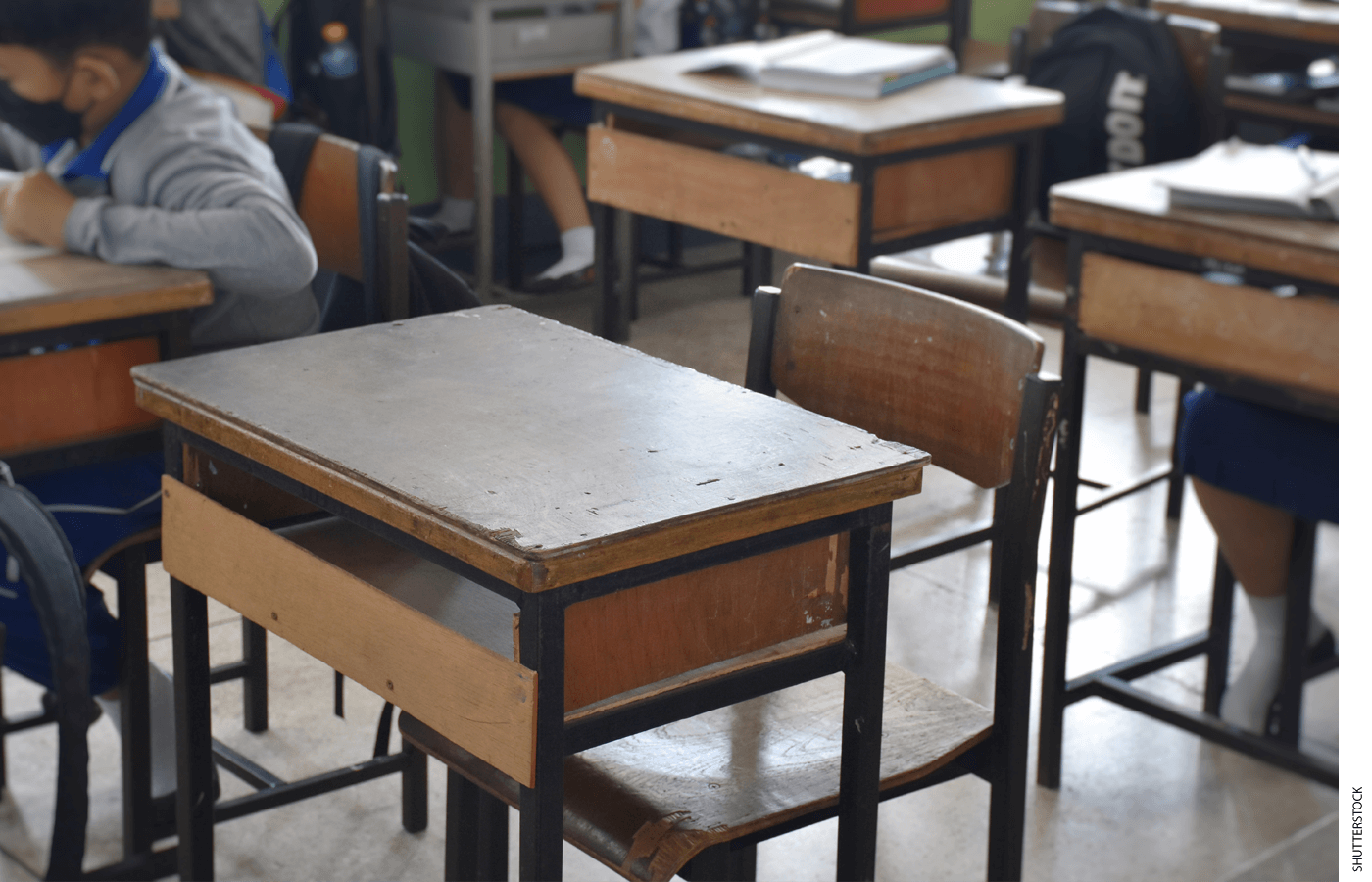
With the latest national test results showing a dispiriting lack of progress in catching students up academically in the wake of the pandemic, one potential explanation stands out: stubbornly high rates of student absenteeism. Vast numbers of students haven’t returned to class regularly since schools reopened.
In California, Florida, and several other states, more than 30 percent of students missed nearly a month of class in the 2021–22 school year, and preliminary numbers for the year that just ended don’t look much better. What’s more, chronic absenteeism has been highest among students with the greatest needs: those living in poverty, learning English, or dealing with disabilities—the same populations that lost the most ground academically during the pandemic.
These trends threaten to undo the federal government’s massive investment in tutoring and other strategies to help students recover academically. But educators and policymakers can take a range of steps to bring students back to school, both by addressing the barriers that keep students from attending class regularly and by making schools more welcoming and engaging for students.
Not surprisingly, teachers play a big role in encouraging students to attend school and stay there. Studies by such scholars as Northwestern University’s Kirabo Jackson, American University’s Seth Gershenson, and the University of Maryland’s Jing Liu, and by the American Institutes for Research’s CALDER Center have found that the way teachers deal with students, particularly their beliefs and biases about their students’ abilities, can have a profound impact on well-being and achievement. Students who feel respected and supported by their teachers demonstrate greater confidence in their ability to learn and are more motivated to tackle demanding classwork, several studies show. These bonds can also extend to mentors and tutors, whom research shows can have a positive impact on attendance.
Closely linked is the role of school climate. Pandemic-era closures and quarantines left many students disconnected, unsure where or whether they fit in when they returned. Simple steps, such as greeting students at the school entrance and as they enter classrooms and making sure every child is engaged with others at recess, can improve school climate, which makes a difference students’ desire to attend school.
Outreach to families when students are absent, whether something as easy as text messages saying they’re missed or postcards letting them know how many days students have been absent, can increase attendance. Families often have no idea how much school their children have missed.
An engaging curriculum and appealing extracurriculars also matter: Research on a STEM career track in Texas and an ethnic studies curriculum in California both showed improvements in student attendance. Attendance improved in Chicago schools where students believed that administrators listened and responded to suggestions on how to improve the school environment, a 2022 study showed. The same is true when parents feel welcome and engaged in their children’s school.
For some students, absenteeism is connected to anxiety and depression, leading to a condition known as “school refusal.” That can look like a teenager unwilling to get out of bed in the morning or a kindergartner complaining of a stomachache. The longer these students remain out of the school, the harder it becomes for them to return. The mental health support that many school districts added during the pandemic can help to address such cases.
Other barriers that have long kept students from attending schools—health, housing, and transportation challenges—have not gone away. But new tools have emerged to respond to them. One is telehealth. Many schools embraced the format during the Covid crisis and are increasingly using it for mental health and substance-abuse treatment post-pandemic. New York City is using its federal Covid aid to offer mental health services via telehealth to every high school student. And Los Angeles County is extending the virtual services to all students.
Studies by the CALDER Center and the Regional Education Laboratory at WestEd show that telehealth influences attendance not only by helping students get back to class more quickly after an appointment but also by identifying mental and physical health problems early, before they lead to more absences.
Improving attendance also involves discarding strategies that don’t work. That means shifting away from a punitive response to truancy and using legal action against students and parents only as a last resort. The last big crackdown on truancy in the mid-1990s was followed by a 69 percent jump in juvenile justice cases but no real change in the rate of unexcused absences. A report from the Council of State Governments Justice Center shows that efforts to impose jail terms and fines on truant students and their parents lead to weaker attendance and higher dropout rates.
Likewise, suspensions for truancy—essentially punishing missed instructional time with more missed instructional time—are counterproductive. What’s more, truancy rules tend to have a disparate impact on students living in poverty, a recent study by Policy Analysis for California Education shows. A student without regular access to health care, for instance, often can’t produce a doctor’s note to justify absences due to illness, leaving him unable to make up work or tests he missed.
Ultimately, positive incentives work best, research has found. The most successful way to get students to attend school regularly is to give them good reasons to want to show up.
Phyllis Jordan is associate director of FutureEd and author of Attendance Playbook: Smart Solutions for Reducing Student Absenteeism Post-Pandemic.


